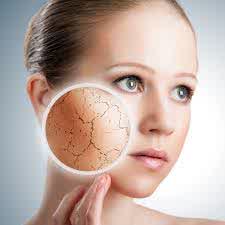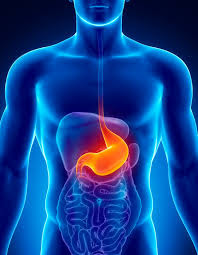More than 100 years the relationship between psychological factors and headache studied.
Emotional factors often trigger a headache, especially migraine. Three types of
headache is most often associated with psychological factors are studied in migraine more intensive compared than other forms.
Typically, migraine sufferers have a specific personality (perfect, ambitious, rigid) as a group, patients with migraine usually intelligence and perfectionist and they are people who are capable of facing the day-to-day crises. But in adaptation to life changes such as puberty, menstruation, separation from family and home, change jobs, marriage, parenthood, or get a high position, it turns out the ability to tackle problems that are usually good, being less well and therefore attack headache then arise.
MigraineMigraine is a painful headache, often accompanied by
nausea,
vomiting, and sensitivity to light.
The exact cause of migraines is unknown, although migraine related to changes in the brain and genetic causes. People with migraines may inherit the tendency to be affected certain migraine triggers, such as fatigue, bright lights, weather changes, and others.
For many years, scientists believed that migraines associated with the expansion and inhibition / constriction of blood vessels in the brain's surface. However, it is now believed that migraines are caused by inherited abnormalities in certain areas of the brain.
There are "central pain" migraine, or generator in the brain. Migraine begins when hyperactive nerve cells send impulses to the blood vessels, causing the blood vessels are prohibited or restricted, followed by dilation (expansion) and the release of prostaglandins, serotonin, and other inflammatory substances that cause painful pulse.
Most migraines seem to be triggered by external factors. Some triggers may include:
- Emotional stress. This is one of the most common triggers of headache / migraine. Migraine sufferers are generally highly affected by stressful events. During stressful events, certain chemicals in the brain are released to combat the situation (known as response "fight or retreat"). The release of these chemicals can provoke vascular changes that can cause migraines. Repressed emotions surrounding stress, such as anxiety, fear, excitement, and fatigue can increase muscle tension and dilation of blood vessels can increase the severity of migraine.
- Sensitivity to certain chemicals and preservatives in food. Food and beverages, such as aged cheese, alcoholic beverages, and food additives such as nitrates and monosodium glutamate may be responsible for triggering mingrain up to 30%.
- Caffeine. Excessive caffeine consumption or the effects of caffeine withdrawal can cause headaches when the caffeine level suddenly drops. The blood vessels seem to be sensitive to caffeine, and when caffeine is not ingested, a headache may occur. Caffeine itself is often helpful in treating acute migraine attacks.
- Changes in weather conditions. Storms, changes in air pressure, winds, or changes in altitude, all can trigger a migraine.
- Menstrual period.
- Overexertion.
- Skipping meals.
- Changes in normal sleep patterns.
The symptoms of migraine can occur in various combinations and include:
- Headache hitting or beating, which often begins as pain and develops into throbbing pain. The pain is usually aggravated by physical activity. The pain can shift from one side of the head to the other, or it can affect the front of the head or felt like illness affects the whole head.
- Sensitivity to light, noise and odors.
- Nausea and vomiting, abdominal unwell, abdominal pain.
- Loss of appetite.
- The taste sensation that is very warm or cold.
- Paleness.
- Fatigue.
- Dizzy.
- Blurred vision.
- Diarrhea.
- Fever (rare).
Most migraines last about four hours despite severe can last up to a week. The frequency of migraines varies greatly between individuals. Common for a migraine sufferer to get a headache from two to four times per month. However, some people may have headaches every few days, while others only get a migraine once or twice a year.
AnxietyAnxiety is a feeling worried vague source, often non-specific or unknown to the individual.
Anxiety is a feeling / emotional response to the judgment, feelings of uncertainty and helplessness (Stuart and Sundeen, 1988). Emotional state experienced objectively and communicated in interpersonal relationships. Anxiety is the emotional response to the judgment in everyday life. Anxiety describe the state of worry, anxiety, fear, do not feel at ease with a variety of physical complaints.
Levels of AnxietyMild AnxietyMild anxiety associated with the tension of the events of everyday life. At this level of perception widen and individuals will be cautious and alert.
Physiological responses:
- Occasionally short of breath.
- Tone and blood pressure rises.
- Mild symptoms in the stomach.
- Wrinkled face and lips quivering.
Cognitive Response:
- Capable of receiving stimuli complex.
- Concentration on the issue.
- Solve problems effectively.
Behavioral and emotional responses:
- Unable to sit quietly.
- Fine tremor of the hands.
- Voice sometimes rising.
Moderate AnxietyAt this rate decreased perception of the environment, individuals are more important things to focus on the moment and the exclusion of anything else.
Physiologic response:
- Often short of breath.
- Pulse and blood pressure rises.
- Dry mouth.
- Anorexia.
- Diarrhea / constipation.
- Agitated.
Cognitive responses:
- Field narrowed perception.
- External stimuli are not able to be accepted.
- Focusing on what the attention.
Behavioral and emotional responses:
- Jerky movements / squeezing hands.
- Talk and more quickly.
- Insomnia.
- Feelings of insecurity.
Severe AnxietyPhysical response:
Muscle tension weight, hyperventilation, eye contact is bad, sweating increased, fast talking, high tone, action aimless and haphazard, jaw tensed, gritted his teeth, need for space increases, pacing, yelling, squeezing hands and shaking.
Cognitive response: field is limited perception, thought processes fragmented, difficulty thinking, problem solving poor, unable to take into consideration the information, only to notice the threat, preoccupation with his own thoughts, and self-centered.
Emotional response: very anxious, agitated, scared, confused, feel inadequate, withdrawal, denial and want to be free.
Relationship Between Anxiety with Migraine- Anxiety is common in migraine sufferers.
- There is a relationship between the degree of pain intensity with anxiety due to the severity of migraine.
- There is a relationship between duration of pain with the severity of anxiety in patients with migraine.











